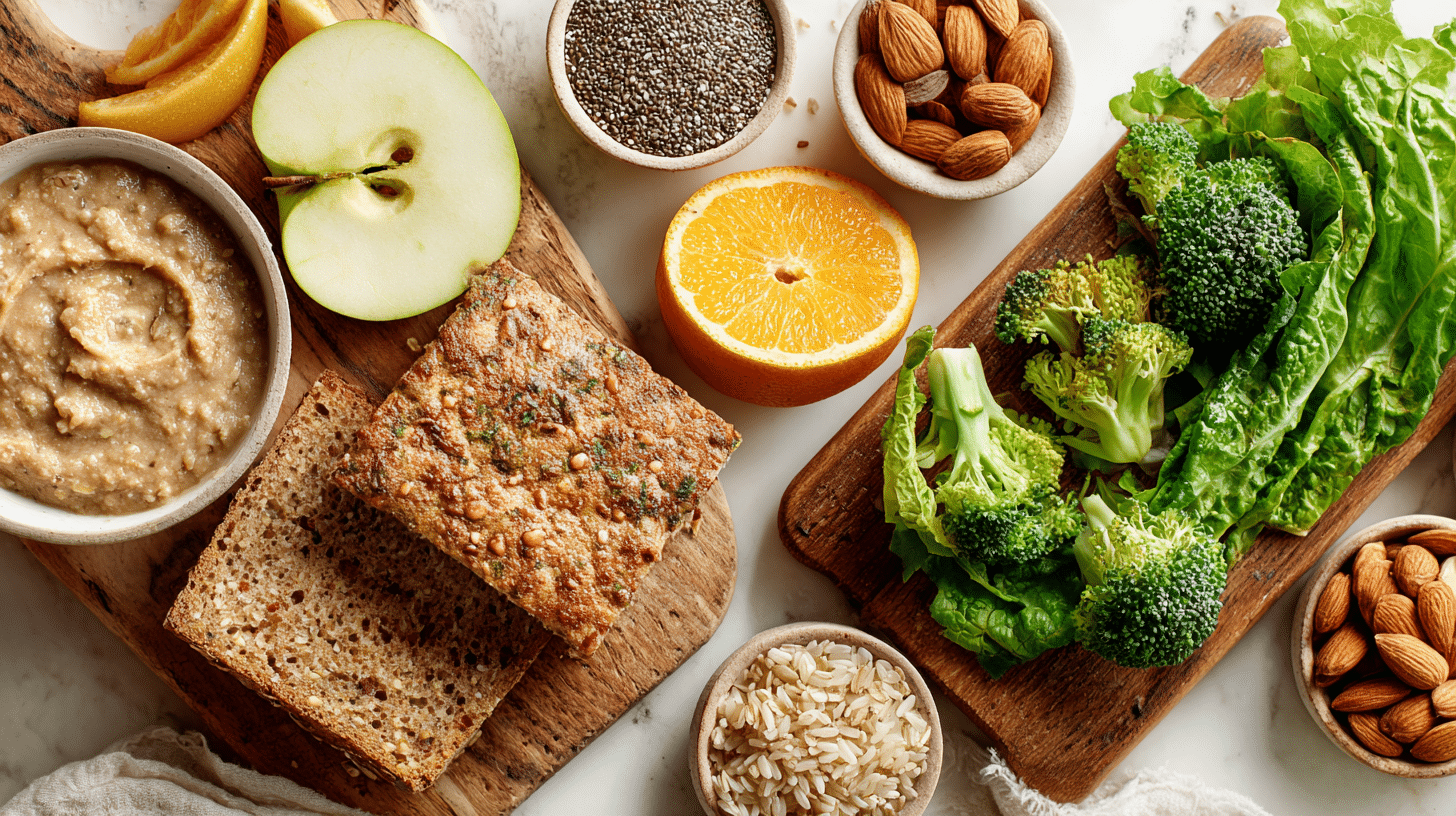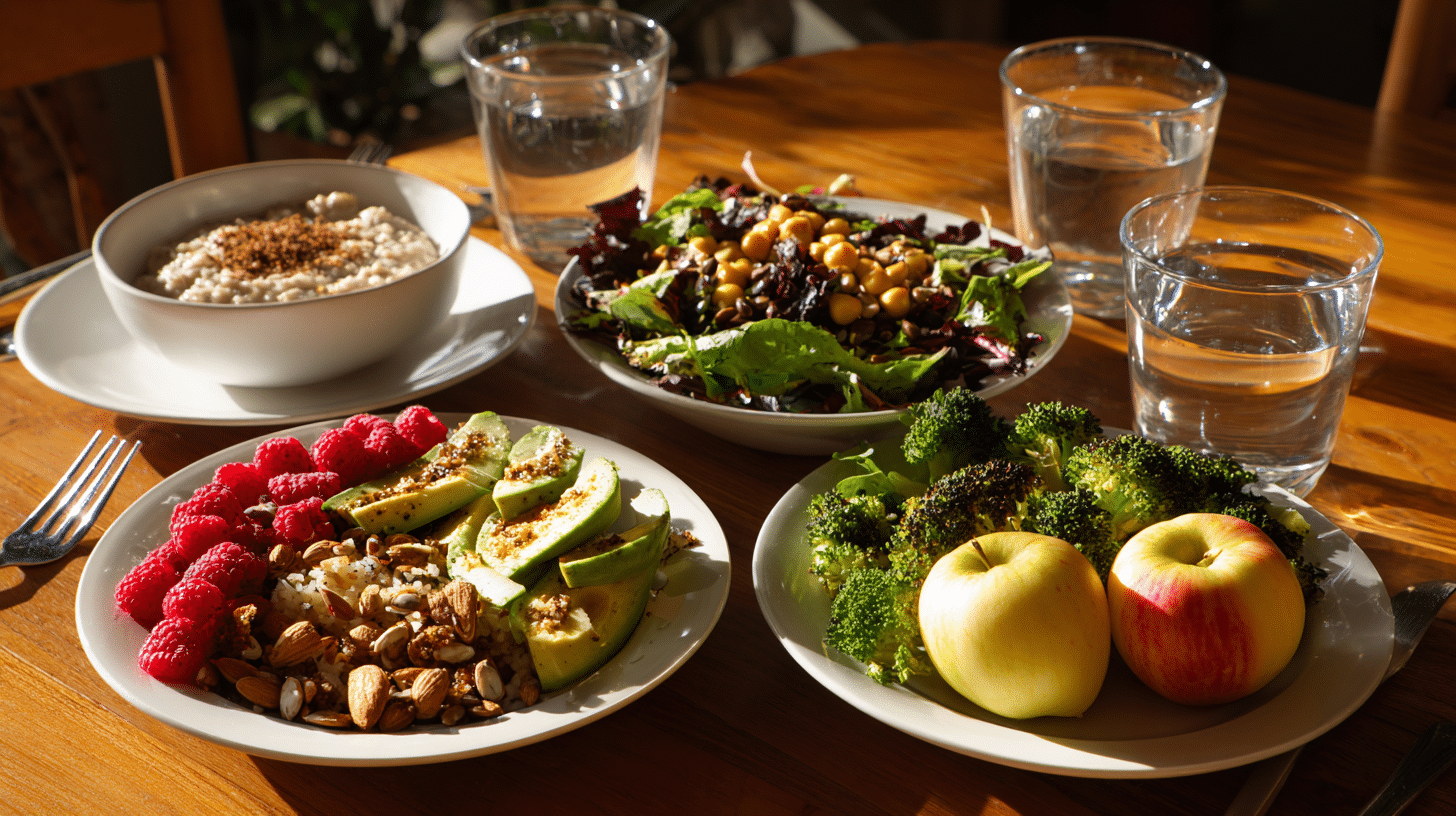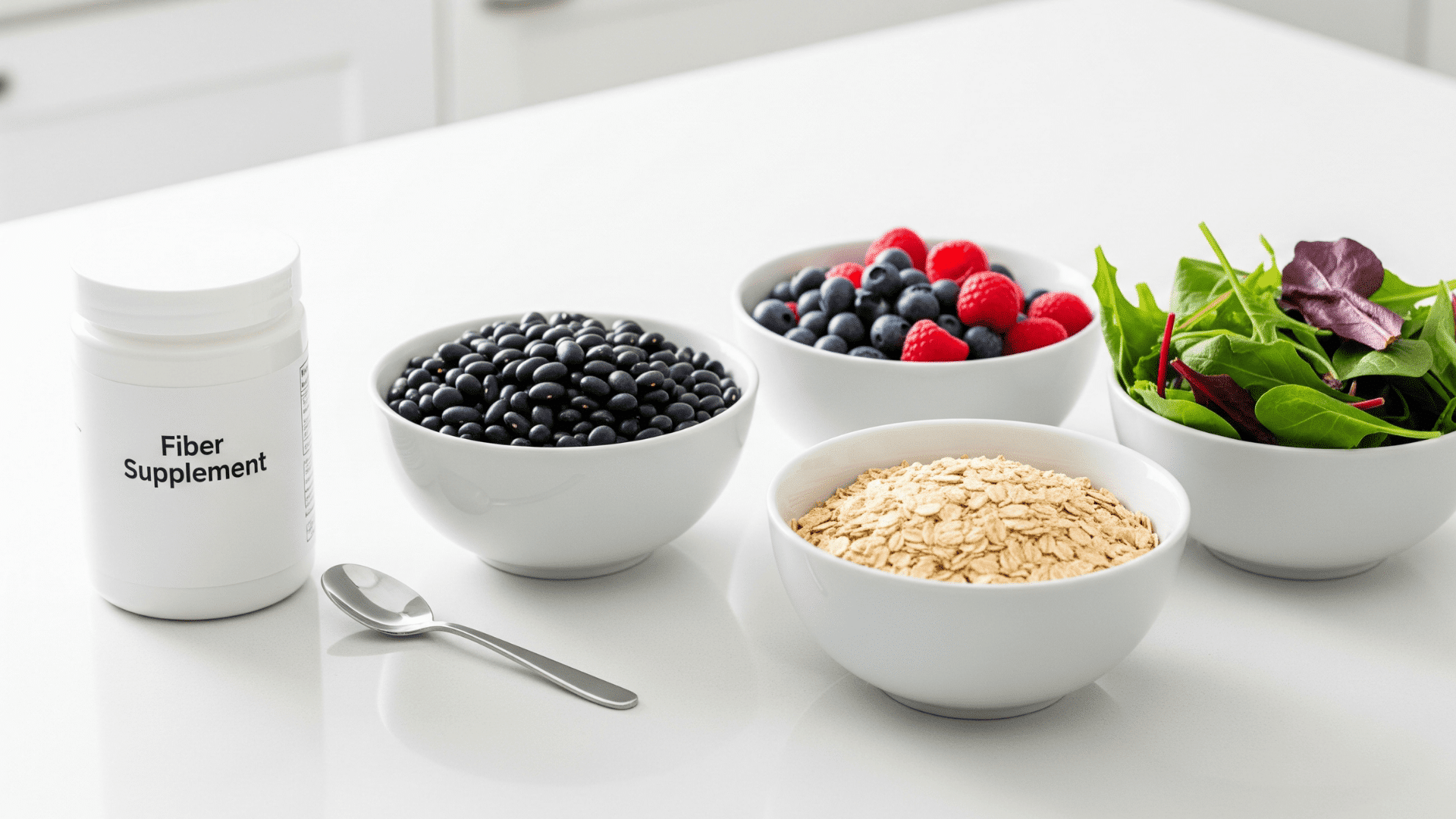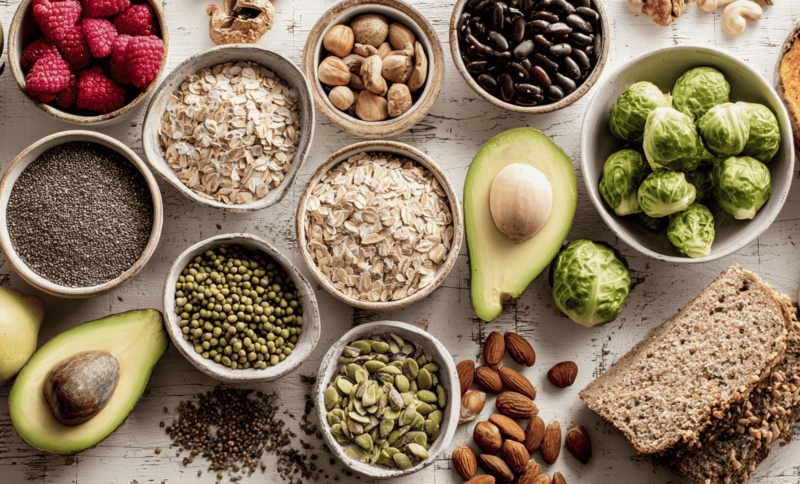Most people only get half the fiber they need each day. If you’ve ever wondered why you feel sluggish after meals or struggle with digestive issues, the answer might be hiding in your kitchen.
Fiber isn’t just about staying regular – it’s one of the most powerful nutrients for transforming your overall health, yet it’s hiding in plain sight in everyday foods.
The good news? Adding more fiber to your diet doesn’t require expensive supplements or complicated meal plans.
With the right knowledge and a simple food chart, you can easily boost your fiber intake and start feeling the benefits within days.
Why Is Fiber Important?
Fiber works like a health superhero in your body, tackling multiple problems at once. Think of it as your digestive system’s best friend and your body’s natural cleanser all rolled into one.
Here’s what fiber does for your health:
Digestive Health: Fiber keeps things moving smoothly through your digestive system. It acts like a gentle broom, sweeping waste through your intestines and preventing constipation.
Weight Control: High-fiber foods make you feel full faster and keep you satisfied longer. This natural appetite control helps prevent overeating without making you feel deprived.
Blood Sugar Regulation: Fiber slows down how quickly your body absorbs sugar, preventing those energy crashes that leave you reaching for more snacks.
Heart Health: Certain types of fiber can lower your cholesterol levels, reducing your risk of heart disease. It’s like having a tiny maintenance crew working to keep your arteries clean.
Cancer Prevention: A fiber-rich diet may lower your risk of colorectal cancer and other digestive cancers by keeping your digestive system healthy and moving toxins out quickly.
Types of Dietary Fiber: Soluble vs. Insoluble

Not all fiber is created equal. Understanding the two main types helps you make better food choices for your specific health goals.
Soluble Fiber
Soluble fiber dissolves in water and forms a gel-like substance in your stomach. This type works like a sponge, absorbing excess cholesterol and sugar before they can enter your bloodstream.
What it does:
- Lowers cholesterol levels
- Helps control blood sugar spikes
- Feeds beneficial gut bacteria
- Slows digestion for better nutrient absorption
Best sources: Oats, apples, lentils, chia seeds, beans, and citrus fruits.
Insoluble Fiber
Insoluble fiber doesn’t dissolve in water. Instead, it adds bulk to your stool and acts like a scrub brush, helping food move through your digestive system more efficiently.
What it does:
- Prevents constipation
- Speeds up waste removal
- Adds bulk to stool
- Supports regular bowel movements
Best sources: Whole wheat products, nuts, leafy greens, vegetables with skins, and seeds.
Why you need both: Think of soluble and insoluble fiber as a tag team. Soluble fiber handles the internal cleanup, while insoluble fiber keeps everything moving. Together, they create the perfect environment for optimal digestive health.
High-Fiber Food Chart
Use this chart to easily identify fiber-rich foods and plan your meals. Aim for 25-35 grams of fiber daily, depending on your age and gender.
| Food Group | Food Item | Serving Size | Fiber Content (grams) | Type |
|---|---|---|---|---|
| Legumes | Black beans | 1/2 cup cooked | 7.5 | Both |
| Lentils | 1/2 cup cooked | 7.8 | Both | |
| Chickpeas | 1/2 cup cooked | 6.2 | Both | |
| Split peas | 1/2 cup cooked | 8.1 | Both | |
| Fruits | Raspberries | 1 cup | 8.0 | Both |
| Apple with skin | 1 medium | 4.4 | Both | |
| Pear with skin | 1 medium | 6.1 | Both | |
| Avocado | 1/2 medium | 6.7 | Both | |
| Vegetables | Artichoke | 1 medium cooked | 10.3 | Both |
| Sweet potato with skin | 1 medium | 3.8 | Both | |
| Broccoli | 1 cup cooked | 5.1 | Both | |
| Brussels sprouts | 1 cup cooked | 4.1 | Both | |
| Grains | Oatmeal | 1 cup cooked | 4.0 | Soluble |
| Quinoa | 1 cup cooked | 5.2 | Both | |
| Brown rice | 1 cup cooked | 3.5 | Insoluble | |
| Whole wheat bread | 2 slices | 6.0 | Insoluble | |
| Nuts & Seeds | Chia seeds | 2 tablespoons | 10.6 | Both |
| Almonds | 1 ounce (23 nuts) | 3.5 | Both | |
| Ground flaxseed | 2 tablespoons | 3.8 | Both | |
| Snacks | Air-popped popcorn | 3 cups | 3.5 | Insoluble |
Daily Fiber Goals:
- Women: 25 grams per day
- Men: 38 grams per day
- Children: Age + 5 grams (e.g., 10-year-old needs 15 grams)
How to Meet Your Fiber Need: Strategy Matters

Increasing your fiber intake successfully requires a smart approach. Rushing the process can lead to uncomfortable side effects that might discourage you from continuing.
1. Start Slowly and Build Up
Add just 5 grams of fiber per week to your current intake. This gives your digestive system time to adjust without causing bloating, gas, or cramping.
Think of it like training for a marathon – you wouldn’t run 26 miles on your first day.
2. Drink More Water
Fiber needs water to do its job effectively. Aim for at least 8 glasses of water daily, and increase this amount as you add more fiber to your diet.
Without enough water, fiber can actually cause constipation instead of preventing it.
3. Diversify Your Sources
Don’t rely on just one or two high-fiber foods. Eating a variety ensures you get both types of fiber and prevents boredom with your meals.
Mix fruits, vegetables, grains, and legumes throughout your day.
Sample High-Fiber Day Menu
- Breakfast (12g fiber): 1 cup of oatmeal topped with 1/2 cup of raspberries and 1 tablespoon of ground flaxseed
- Lunch (11g fiber): Large salad with mixed greens, 1/2 cup chickpeas, 1/2 avocado, and whole-grain croutons
- Dinner (10g fiber): 1 cup cooked quinoa, steamed broccoli, and 1/2 cup black beans
- Snacks (5g fiber): 1 medium apple with skin and 1 ounce of almonds
Total: 38 grams of fiber
When to Use Supplements (and When to Prefer Food)

While whole foods should be your primary fiber source, supplements can be helpful in specific situations.
1. When Supplements Make Sense
- Medical needs: Your doctor recommends extra fiber for digestive issues
- Travel: Maintaining fiber intake when healthy options are limited
- Picky eating: Difficulty getting children or family members to eat fiber-rich foods
- Digestive conditions: Specific medical conditions requiring controlled fiber intake
2. Why Food Wins Most of the Time
Whole foods provide fiber plus essential vitamins, minerals, antioxidants, and other beneficial compounds that supplements can’t match. An apple doesn’t just give you fiber – it also provides vitamin C, potassium, and disease-fighting antioxidants.
The bottom line: Use supplements as a backup plan, not your main strategy.
Pitfalls To Avoid When Increasing Fiber
Learning from common mistakes can save you from uncomfortable experiences that might derail your fiber goals.
Too Much, Too Fast
- The mistake: Jumping from 10 grams to 35 grams of fiber overnight.
- The result: Bloating, gas, cramping, and digestive discomfort.
- The solution: Increase gradually by 5 grams per week.
Forgetting to Hydrate
- The mistake: Adding fiber without increasing water intake.
- The result: Constipation and feeling worse than before.
- The solution: Drink an extra glass of water for every 10 grams of added fiber.
Relying on Processed Fiber Products
- The mistake: Thinking fiber bars and supplements are equivalent to whole foods.
- The result: Missing out on other important nutrients and potentially consuming too much-added sugar.
- The solution: Use processed fiber products sparingly and focus on whole foods.
Conclusion & Action Steps
Fiber is one of the easiest and most effective ways to improve your health starting today.
It supports your digestive system, helps control your weight, regulates blood sugar, and may even reduce your risk of serious diseases.
Start by adding one high-fiber food from the chart to each meal this week. Drink an extra glass of water with each fiber-rich meal to help your digestion.
Increase your fiber intake slowly by 5 grams each week until you reach your daily goal.
Remember, small changes lead to big results. Start by adding one high-fiber food to each meal, and within a month, you’ll likely notice improved digestion, more stable energy levels, and better overall health.
Your future self will thank you for making this simple but powerful change today.













